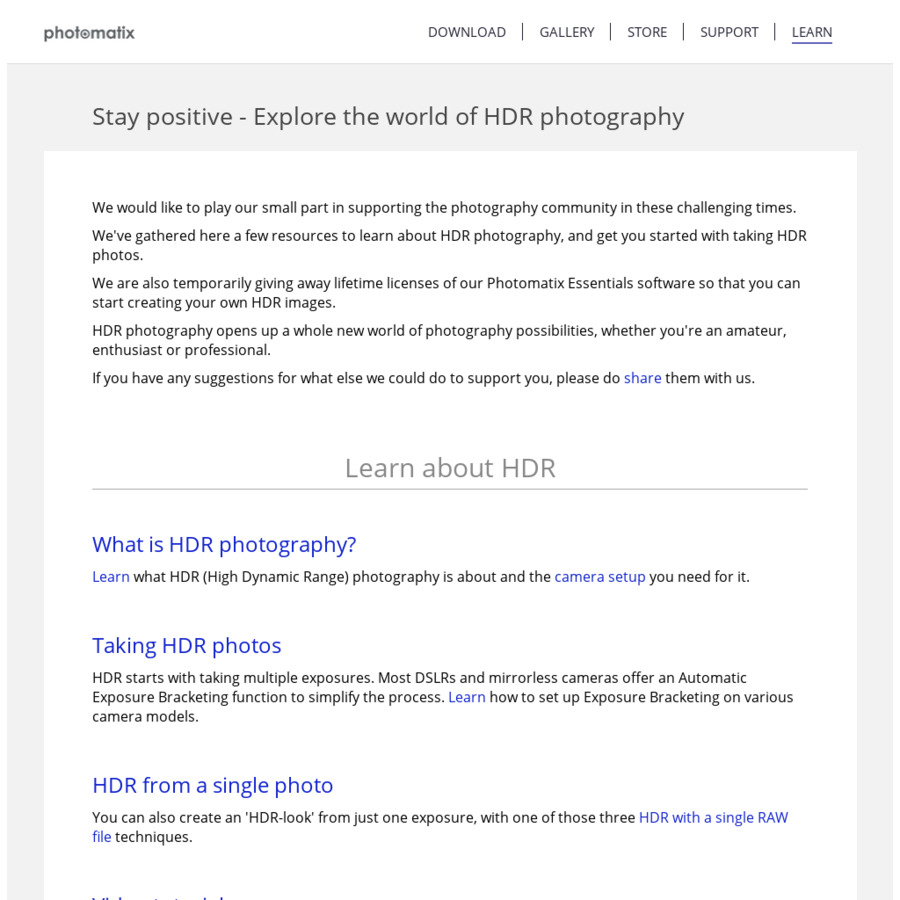
- #PHOTOMATIX ESSENTIALS 3.2.4 LICENSE KEY HOW TO#
- #PHOTOMATIX ESSENTIALS 3.2.4 LICENSE KEY MANUAL#
- #PHOTOMATIX ESSENTIALS 3.2.4 LICENSE KEY FULL#
- #PHOTOMATIX ESSENTIALS 3.2.4 LICENSE KEY PRO#
- #PHOTOMATIX ESSENTIALS 3.2.4 LICENSE KEY SOFTWARE#
#PHOTOMATIX ESSENTIALS 3.2.4 LICENSE KEY MANUAL#
Consult your camera manual for model-specific instructions for using this setting.

This enables you to automatically take three or more exposures in a row: one at the proper exposure, one or more underexposed, and one or more overexposed. A tripod is typically recommended, but is not required, as Photomatix Essentials includes options to automatically align hand-held bracketed sets.ĭSLR cameras and some compact digital cameras offer Automatic Exposure Bracketing (AEB).

The flash may try to balance the exposure of all the images, when the goal is a range of exposures. Select a low ISO, such as ISO 100 or lower.Set your camera to Aperture Priority (“A” setting) so that only the shutter speed varies between the exposures.HDR photography requires that you set up your camera a bit differently than normal: The first step is capturing good bracketed sets.
#PHOTOMATIX ESSENTIALS 3.2.4 LICENSE KEY SOFTWARE#
The purpose of HDR software like Photomatix Essentials is to artfully combine this bracketed set into a single image, to achieve more faithful realism, or heightened realism, or artistic effect.īut these artistic choices come later. The resulting “bracketed set” of photos contains, as a group, more complete and true exposure information than any single image capture can possibly contain. This strategy for capturing more of a scene’s true dynamic range, with exposures above and below a standard exposure, is called “exposure bracketing”. Instead of taking a single exposure of a scene, for HDR you take at least 3 exposures: one optimized for midrange tones (as normal), plus one optimized for highlights and one optimized for shadows. All it takes is a different mindset than for traditional photography, which emphasizes taking and editing a single photo, independent from any others.
#PHOTOMATIX ESSENTIALS 3.2.4 LICENSE KEY HOW TO#
These turn to shadow and black ness.ġ.2 How to Take Photos for HDR Processing
#PHOTOMATIX ESSENTIALS 3.2.4 LICENSE KEY PRO#
#PHOTOMATIX ESSENTIALS 3.2.4 LICENSE KEY FULL#
To some of these photographers, in fact, it is the standard photograph which is somewhat non-realistic, in that it does not accurately capture the full dynamic range of most photographed scenesįor many other photographers, HDR is approached more as a creative tool, one that affords great artistic latitude. HDR to this photographer is not an “effect”, but is a remedy to the dynamic range limitation of camera image sensors. With that data in hand, Photomatix Essentials can merge the dif-ferent photos and process them to rescue details from shadows and keep highlights from blow ing out.įor some photographers the key purpose and significance of HDR is its ability to increase photographic realism. HDR photography solves these problems by taking enough photos (typically 3, separated by 2 EV steps) to contain the entire exposure range of a scene. This results in two main problems (which sometimes happen together in the same photo): In other words, today’s digital camera can’t properly expose everything at the same time in scenes with even moderate contrast ratios. The central premise of HDR photography is that there are few situations where a single photograph can capture the true dynamic range (the total range of light in a scene, from very dark to very light) of a scene accurately. Section 1: HDR (High Dynamic Range) Photography 23Įach section listed above is a clickable link.Īll page footers in this document link back to this page. 19Ĥ.3 Refresh Preview Continuously (standalone edition). Section 2: Installing Photomatix Essentials.

2ġ.2 How to Take Photos for HDR Processing. Section 1: HDR (High Dynamic Range) Photography.


 0 kommentar(er)
0 kommentar(er)
